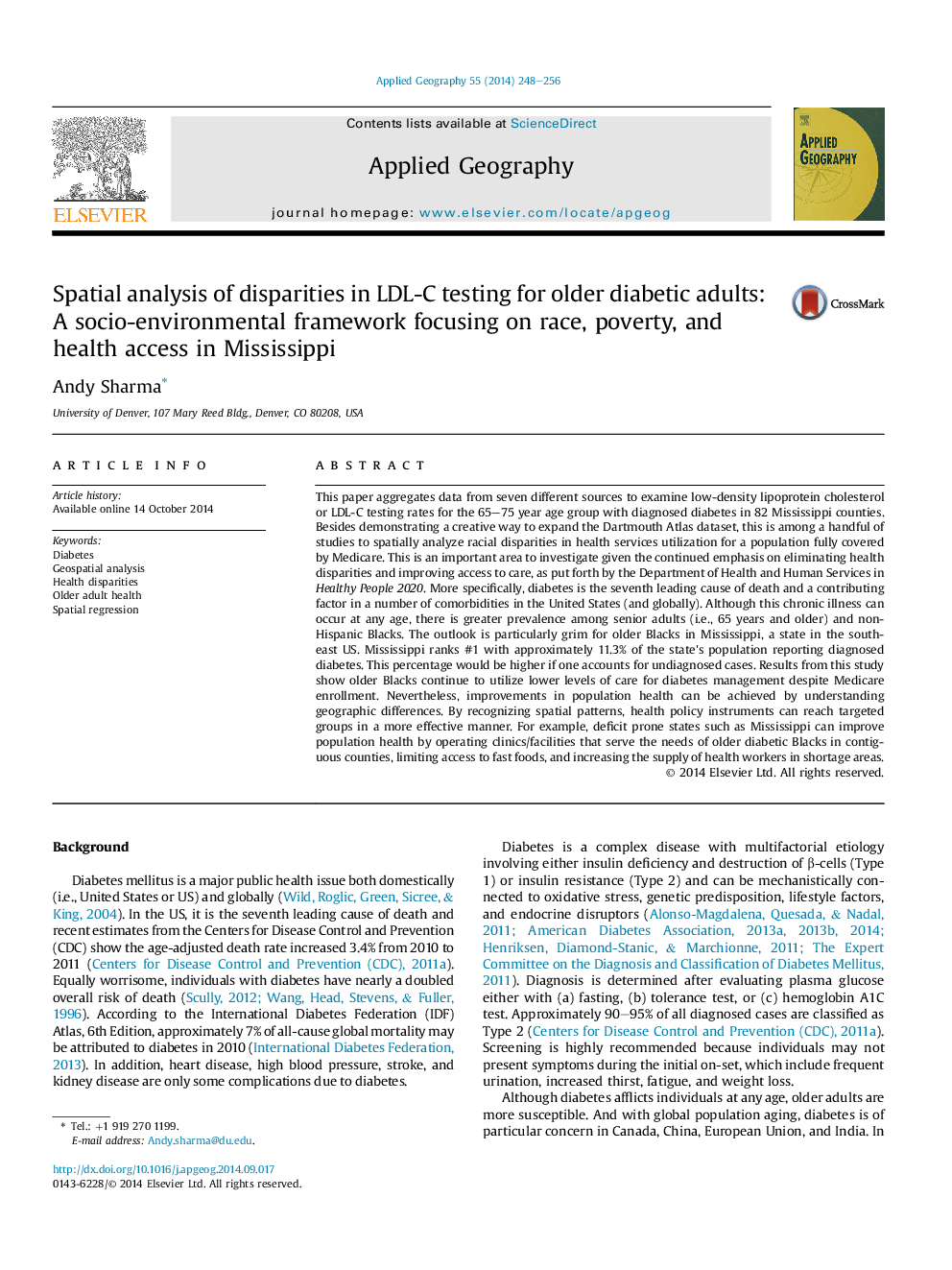| کد مقاله | کد نشریه | سال انتشار | مقاله انگلیسی | نسخه تمام متن |
|---|---|---|---|---|
| 6538686 | 158707 | 2014 | 9 صفحه PDF | دانلود رایگان |
عنوان انگلیسی مقاله ISI
Spatial analysis of disparities in LDL-C testing for older diabetic adults: A socio-environmental framework focusing on race, poverty, and health access in Mississippi
دانلود مقاله + سفارش ترجمه
دانلود مقاله ISI انگلیسی
رایگان برای ایرانیان
کلمات کلیدی
موضوعات مرتبط
علوم زیستی و بیوفناوری
علوم کشاورزی و بیولوژیک
جنگلداری
پیش نمایش صفحه اول مقاله

چکیده انگلیسی
This paper aggregates data from seven different sources to examine low-density lipoprotein cholesterol or LDL-C testing rates for the 65-75 year age group with diagnosed diabetes in 82 Mississippi counties. Besides demonstrating a creative way to expand the Dartmouth Atlas dataset, this is among a handful of studies to spatially analyze racial disparities in health services utilization for a population fully covered by Medicare. This is an important area to investigate given the continued emphasis on eliminating health disparities and improving access to care, as put forth by the Department of Health and Human Services in Healthy People 2020. More specifically, diabetes is the seventh leading cause of death and a contributing factor in a number of comorbidities in the United States (and globally). Although this chronic illness can occur at any age, there is greater prevalence among senior adults (i.e., 65 years and older) and non-Hispanic Blacks. The outlook is particularly grim for older Blacks in Mississippi, a state in the southeast US. Mississippi ranks #1 with approximately 11.3% of the state's population reporting diagnosed diabetes. This percentage would be higher if one accounts for undiagnosed cases. Results from this study show older Blacks continue to utilize lower levels of care for diabetes management despite Medicare enrollment. Nevertheless, improvements in population health can be achieved by understanding geographic differences. By recognizing spatial patterns, health policy instruments can reach targeted groups in a more effective manner. For example, deficit prone states such as Mississippi can improve population health by operating clinics/facilities that serve the needs of older diabetic Blacks in contiguous counties, limiting access to fast foods, and increasing the supply of health workers in shortage areas.
ناشر
Database: Elsevier - ScienceDirect (ساینس دایرکت)
Journal: Applied Geography - Volume 55, December 2014, Pages 248-256
Journal: Applied Geography - Volume 55, December 2014, Pages 248-256
نویسندگان
Andy Sharma,